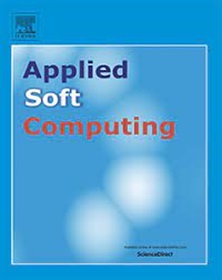一类不平衡的过渡矩阵驱动过采样技术
IF 6.6
1区 计算机科学
Q1 COMPUTER SCIENCE, ARTIFICIAL INTELLIGENCE
引用次数: 0
摘要
类不平衡是机器学习中的一个挑战,通常会使预测性能向多数类倾斜,并破坏少数类预测的准确性。为了解决这个问题,我们引入了MCSMOTE,一种新的重采样方法,它采用基于过渡矩阵的蒙特卡罗机制来生成合成样品。MCSMOTE的区别在于对特征之间的关系进行建模,并利用概率转换来生成合成数据点,从而有效地捕获底层数据结构。这种方法确保增强少数类的代表性,同时近似少数类的局部结构,从而生成反映底层数据模式的样本。在63个不同的不平衡数据集上进行的综合实验表明,当使用多个分类器和六个关键性能指标:平衡精度、F1-score、G-mean、MCC、ROCAUC和ROCAUC进行评估时,MCSMOTE始终优于9种广泛使用的重采样技术——nores、ROS、SMOTE、ADASYN、BLSMOTE、RWO、SMOTEWB、DeepSMOTE、RWO和gqeo。结果表明,MCSMOTE在所有指标中实现了最高的平均性能。Friedman和Nemenyi测试证实了这些改进在统计上是显著的。消融研究进一步强调了MCSMOTE超参数选择在不同数据特征下的稳定性和有效性。这些发现确立了MCSMOTE作为解决机器学习应用中的类不平衡的强大而可靠的解决方案。本文章由计算机程序翻译,如有差异,请以英文原文为准。
MCSMOTE: A transition matrix-driven oversampling technique for class imbalance
Class imbalance presents a challenge in machine learning, often skewing predictive performance toward the majority class and undermining the accuracy of minority class predictions. To address this, we introduce MCSMOTE, a novel resampling method that employs a transition matrix-based Monte Carlo mechanism for generating synthetic samples. MCSMOTE differentiates itself by modeling the relationships among features and leveraging probabilistic transitions to generate synthetic data points that effectively capture the underlying data structure. This approach ensures enhanced representativeness of the minority class while approximating the local structure of the minority class and thereby generating samples that reflect the underlying data patterns. Comprehensive experiments across 63 diverse imbalanced datasets demonstrate that MCSMOTE consistently outperforms nine widely used resampling techniques—NORES, ROS, SMOTE, ADASYN, BLSMOTE, RWO, SMOTEWB, DeepSMOTE, RWO, and GQEO—when evaluated using multiple classifiers and six key performance metrics: balanced accuracy, F1-score, G-mean, MCC, ROCAUC, and ROCAUC. Results show that MCSMOTE achieves the highest average performance across all metrics. Friedman and Nemenyi tests confirm that these improvements are statistically significant. An ablation study further highlights the stability and effectiveness of MCSMOTE’s hyperparameter choices across different data characteristics. These findings establish MCSMOTE as a powerful and reliable solution for addressing class imbalance in machine learning applications.
求助全文
通过发布文献求助,成功后即可免费获取论文全文。
去求助
来源期刊

Applied Soft Computing
工程技术-计算机:跨学科应用
CiteScore
15.80
自引率
6.90%
发文量
874
审稿时长
10.9 months
期刊介绍:
Applied Soft Computing is an international journal promoting an integrated view of soft computing to solve real life problems.The focus is to publish the highest quality research in application and convergence of the areas of Fuzzy Logic, Neural Networks, Evolutionary Computing, Rough Sets and other similar techniques to address real world complexities.
Applied Soft Computing is a rolling publication: articles are published as soon as the editor-in-chief has accepted them. Therefore, the web site will continuously be updated with new articles and the publication time will be short.
 求助内容:
求助内容: 应助结果提醒方式:
应助结果提醒方式:


